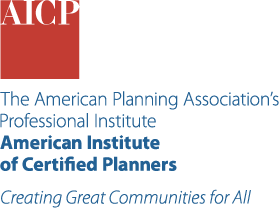Spotlight on Zoning Practice
Turn Down the Lights

Light pollution from human activity disrupts the natural rhythms of plants and animals. What's more, there is mounting evidence that bright artificial lights are also unhealthy for people, with potentially elevated risks for many conditions, including insomnia, cancer, heart disease, and Alzheimer's. Nevertheless, sufficient outdoor lighting is essential for public safety. So, what's a planner to do?
According to K. A. McBride in the February issue of Zoning Practice, "Modernizing Outdoor Lighting Regulations," determining and achieving appropriate exterior lighting levels across a complex urban environment is more of an art than a science. But this doesn't mean that the basic principles are counterintuitive or the regulatory tools unprecedented.
Watts the Problem?
As McBride notes, local outdoor lighting regulations are commonplace, but in many communities, these regulations are out of step with contemporary lighting technology and industry standards. For example, many local codes still express maximum light levels in watts, which correspond to energy usage, rather than lumens, which measure brightness. Modern light-emitting diode (LED) fixtures can produce several times more lumens per watt than incandescent or fluorescent lighting fixtures. So, it's crucial to make sure we're writing the rules for outdoor lighting in the right language.
A second common problem is that planners and local officials have long tied exterior lighting standards to land use categories rather than the context-sensitive lighting needs of the community. At the site level, there can be important contextual differences between two identically defined uses. And land use isn't necessarily the best proxy for lighting needs. According to McBride, though, this isn't the only way to manage exterior lighting levels through zoning.
Could Zoning Light the Way?
McBride invites us to consider a lighting-specific twist on zoning, where overlay zones correspond to different lighting context areas. This approach can help planners and local officials tie permissible lighting levels to nighttime activity needs rather than broad land use categories. It stands to reason that a bustling downtown may need more light than a neighborhood business district, even if they have the same mix of defined uses.
McBride says planners and local officials should set permissible lighting levels based on what is necessary for the eye. While base zoning designations may change abruptly from block to block (or even parcel to parcel), our eyes rely on more gentle lighting transitions. (Think about how long it takes for your eyes to adjust after you switch off all the lights in a room.) For this reason, the lighting zoning concept prohibits dramatic changes in permissible lighting levels from one parcel or block to another. In other words, there are no "spot" lighting zones.
Subscribe to Zoning Practice

Each issue of Zoning Practice provides practical guidance for planners and land-use attorneys engaged in drafting or administering local land-use and development regulations. An annual subscription to ZP includes access to the complete archive of previous issues.
Top image: weaver1234 / iStock / Getty Images Plus


